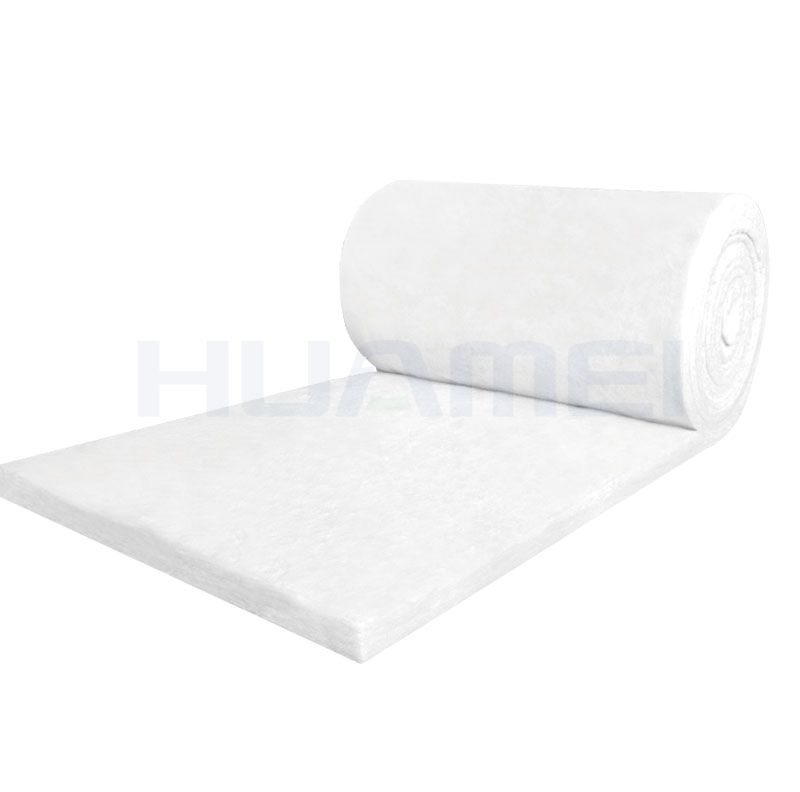Formaldehyde-free and environmentally-friendly Glass Wool is based on the traditional centrifugal glass wool base to partially adjust the glass wool material formula and molding process so that the raw cotton is properly combined with the new binder, cured, and shaped.
Formaldehyde-free environmentally-friendly glass wool uses a completely different adhesive from traditional glass wool. It is an acrylic adhesive. It completely eliminates toxic and harmful substances such as phenol, formaldehyde and urea. Therefore, it is an innovation of traditional glass wool.
Features of formaldehyde-free environmentally friendly glass wool:
No matter in the production process of adhesive and glass wool, the formaldehyde will not be released after the use of glass wool equipment, so it will not cause any pollution to your indoor environment. Formaldehyde-free environmentally friendly glass wool does not contain harmful substances such as ammonia and benzene. Tasteless, non-toxic, protect human health and completely improve the working environment. It inherits the significant benefits of traditional centrifugal glass wool, such as slender fibers, uniform cotton distribution, and good resilience. It has the same excellent physical and thermal functions as traditional centrifugal glass wool. Formaldehyde-free environmentally-friendly glass wool is naturally pure white, making the product more beautiful and beautiful.
Glass Wool
Use of formaldehyde-free environmentally friendly glass wool
Formaldehyde-free glass wool board is a plate product with a certain strength made after centrifugal glass wool is cured. It can maintain excellent thermal insulation function in high or low temperature environments. It is mainly used for high-end interior wall compartments. , Ceiling ceilings, iron ducts or insulation of the inner wall of the bellows, sound absorption and noise reduction in the computer room, sweat control of the metal ceiling, etc., have broad application prospects.
Glass Wool Roll is specially used for the insulation of all kinds of pipes (including: refrigeration, hot water, steam) system. It can work normally at an ambient temperature not higher than 454°C, and can be exposed and shaded.
1 fire protection function
Glass wool has the highest fire rating-A1 level, which fully meets the relevant national fire protection requirements, guarantees the safety of buildings, and ensures the safety of users' lives and property.
2 insulation function
Glass wool, uniform fiber distribution and more slender fibers make the product have a lower thermal conductivity, ensure the superior thermal insulation function of the product and other superior functional goals, and ensure the long-term thermal insulation effect of the product.
3 environmental protection function
Glass wool is an inorganic thermal insulation material made of colorless flat glass and quartz sand as the primary source materials. It is a green building material product. Construction waste can be recycled and fully meets environmental protection requirements.
4 Acoustic Functions
The porous structure inside the glass wool makes it have superior sound absorption ability, which greatly advances the comfort of the indoor environment.
5 Structural seismic function
Because glass wool is thin and long, the overall structure is high in strength and tensile and anti-vibration functions are superior. It is not easy to show sagging, scattering or collapse regardless of equipment or long-term use.
6 chemical function
Glass wool materials have good scale stability and are not easily damaged and corroded by natural and human factors such as high temperature, lightning, rain, sunlight, acid and alkali.
7Ventilation function
The porous and open structure of glass wool and the special formula make it have better air permeability than other insulation materials, which helps to disperse the moisture in the room and the wall in time, greatly reducing the possibility of mold growth and helping to extend the repair The building uses the longevity, which can also travel into the comfort of the indoor environment.
The above is the information about formaldehyde-free environmentally friendly glass wool introduced by Glass Wool Manufacturer.

评论
发表评论